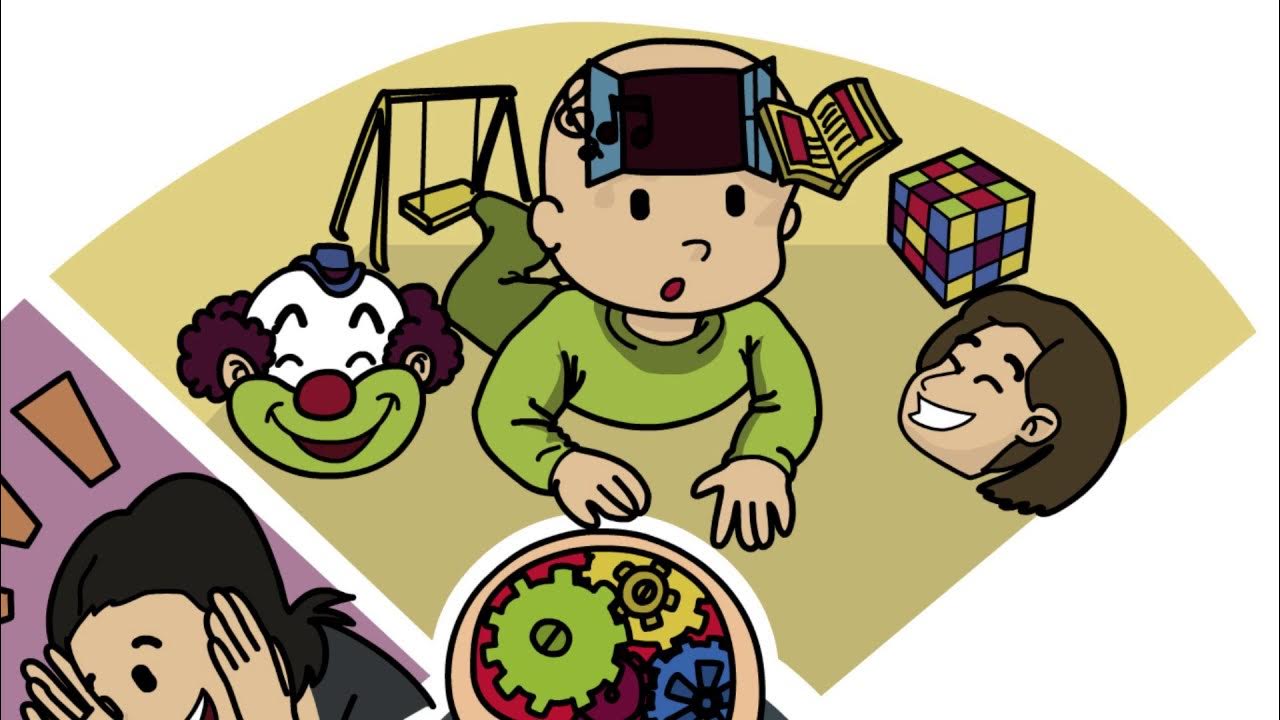The Attachment Theory: How Childhood Affects Life
Summary
TLDRThe attachment theory emphasizes the importance of a strong bond with a primary caregiver during early childhood for healthy development. Secure attachment fosters trust and social skills, leading to success, while insecure attachment can result in mistrust and relationship difficulties. The script explores different attachment styles through the Smith family's story, highlighting the long-term effects of early attachment on health and relationships. It also discusses the impact of toxic stress and the predictive power of attachment styles on future outcomes.
Takeaways
- 🧲 The attachment theory emphasizes the importance of a strong emotional and physical bond with a primary caregiver for early childhood development.
- 🌐 Secure attachment fosters a sense of safety, enabling children to explore the world confidently with the knowledge of a safe base to return to.
- 🚫 Insecure attachment can lead to fear and reluctance to explore due to uncertainty about the availability of a safe base.
- 🔑 Securely attached individuals typically exhibit greater trust, better social skills, and are often more successful in life.
- 🚷 Insecure attachment can manifest in mistrust, lack of social skills, and difficulties in forming relationships.
- 🔄 There is one type of secure attachment and three types of insecure attachments: Anxious/Ambivalent, Anxious/Avoidant, and Anxious/Disorganized.
- 👦 The story of the Smith family illustrates how different attachment styles can develop in children due to varying parental circumstances.
- 🧠 Luka's secure attachment, despite his father's death, demonstrates the resilience of a strong early bond with his mother.
- 😖 Ann's Anxious Ambivalent attachment style is a result of her struggle with the unpredictability of her mother's attention post her father's death.
- 😶 Joe's Anxious Avoidant attachment is influenced by his uncle's strict and punitive approach to discipline.
- 😨 Amy's Anxious Disorganized attachment stems from the fear and abuse she experiences in the nursery, disrupting her understanding of love and safety.
- 🧬 Toxic stress from early childhood can have long-term effects on brain development and health, potentially even altering gene expressions.
- 👶 The 'Strange Situation' test can assess a child's attachment style as early as one year of age, based on their reaction to their mother's return after being left alone.
- 🔮 Long-term studies have shown a correlation between early attachment styles and later outcomes such as educational attainment and health issues.
- 🌱 Early attachment lays the foundation for subsequent behaviors and worldview, affecting a person's ability to form relationships and maintain a positive self-image.
Q & A
What is the main argument of the attachment theory?
-The attachment theory argues that a strong emotional and physical bond to one primary caregiver in the first years of life is critical to a person's development, influencing their ability to feel secure and explore the world.
What is the difference between secure and insecure attachment?
-Secure attachment is characterized by a strong bond with a caregiver, leading to a sense of safety and the ability to explore confidently. Insecure attachment, on the other hand, is marked by a weak bond, resulting in fear and reluctance to explore due to uncertainty about the caregiver's availability.
What are the three types of insecure attachments mentioned in the script?
-The three types of insecure attachments are Anxious/Ambivalent, Anxious/Avoidant, and Anxious/Disorganized. These types differ in how individuals respond to distress and their strategies for seeking security.
How does the script illustrate the impact of attachment on the development of Luka, Ann, Joe, and Amy?
-The script uses the example of the Smith family to show how different attachment styles can affect children's development. Luka, who is securely attached, grows into a trusting and optimistic young man. Ann, with Anxious Ambivalent attachment, becomes unpredictable and moody. Joe, with Anxious Avoidant attachment, struggles with forming relationships. Amy, with Anxious Disorganized attachment, develops a negative self-image and avoids social situations.
Outlines

Dieser Bereich ist nur für Premium-Benutzer verfügbar. Bitte führen Sie ein Upgrade durch, um auf diesen Abschnitt zuzugreifen.
Upgrade durchführenMindmap

Dieser Bereich ist nur für Premium-Benutzer verfügbar. Bitte führen Sie ein Upgrade durch, um auf diesen Abschnitt zuzugreifen.
Upgrade durchführenKeywords

Dieser Bereich ist nur für Premium-Benutzer verfügbar. Bitte führen Sie ein Upgrade durch, um auf diesen Abschnitt zuzugreifen.
Upgrade durchführenHighlights

Dieser Bereich ist nur für Premium-Benutzer verfügbar. Bitte führen Sie ein Upgrade durch, um auf diesen Abschnitt zuzugreifen.
Upgrade durchführenTranscripts

Dieser Bereich ist nur für Premium-Benutzer verfügbar. Bitte führen Sie ein Upgrade durch, um auf diesen Abschnitt zuzugreifen.
Upgrade durchführenWeitere ähnliche Videos ansehen

Attachment Theory - John Bowlby

The Strange Situation | Mary Ainsworth, 1969 | Developmental Psychology

Place Matters: The Environment We Create Shapes the Foundations of Healthy Development

O NEURODESENVOLVIMENTO INFANTIL

Encontro de Impulso - 28.10.24 sobrr s criança ferida com a telma

John Bowlby's Attachment Theory (How Childhood Affects Adult Life)
5.0 / 5 (0 votes)
